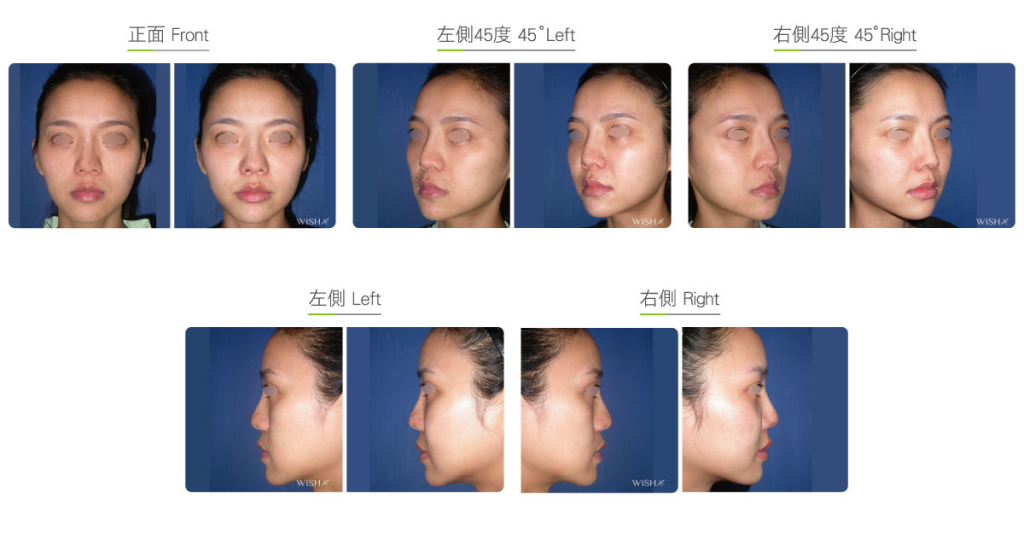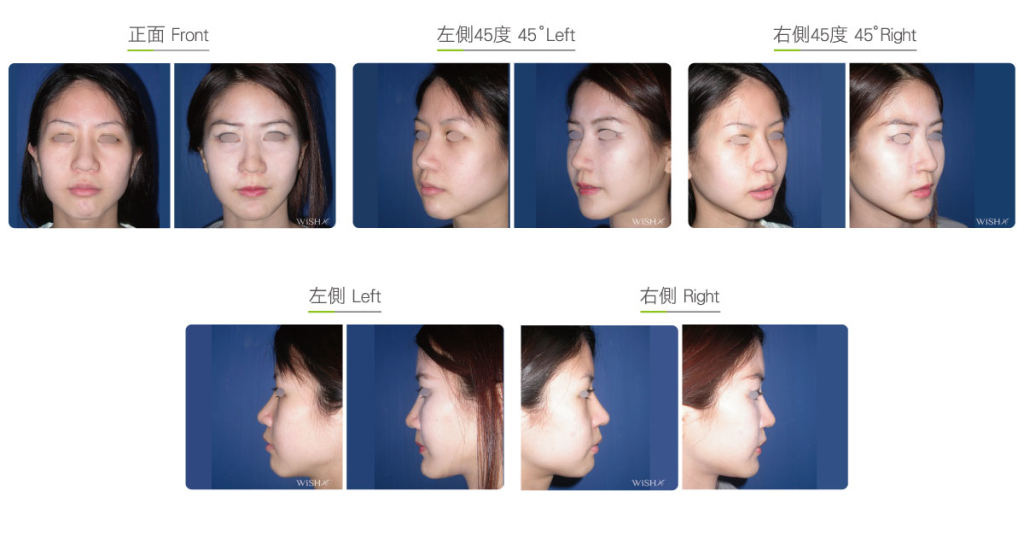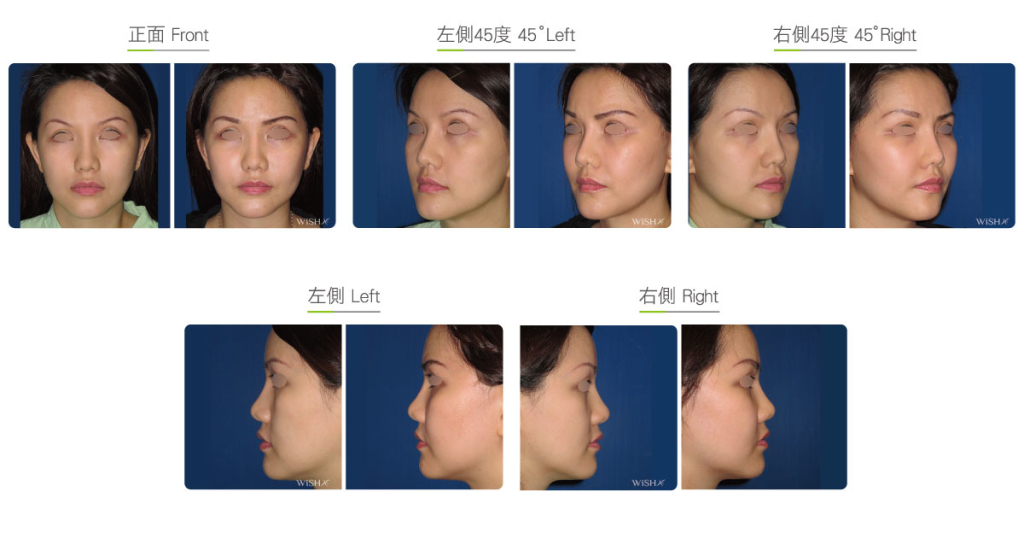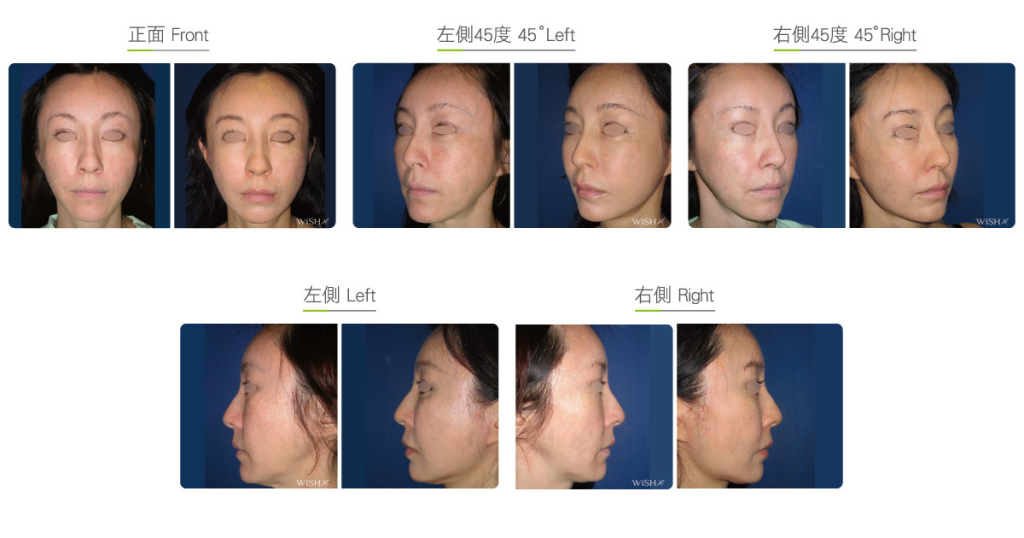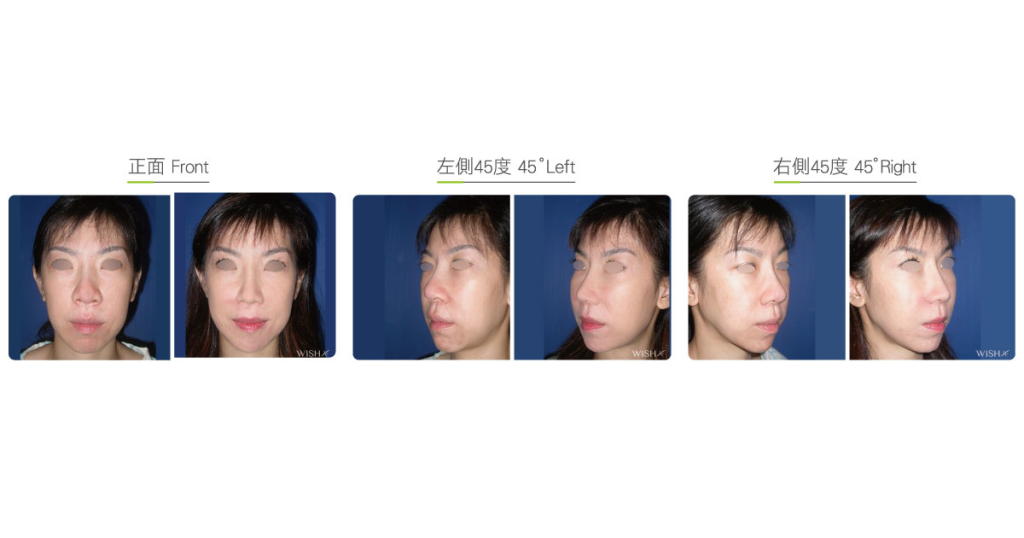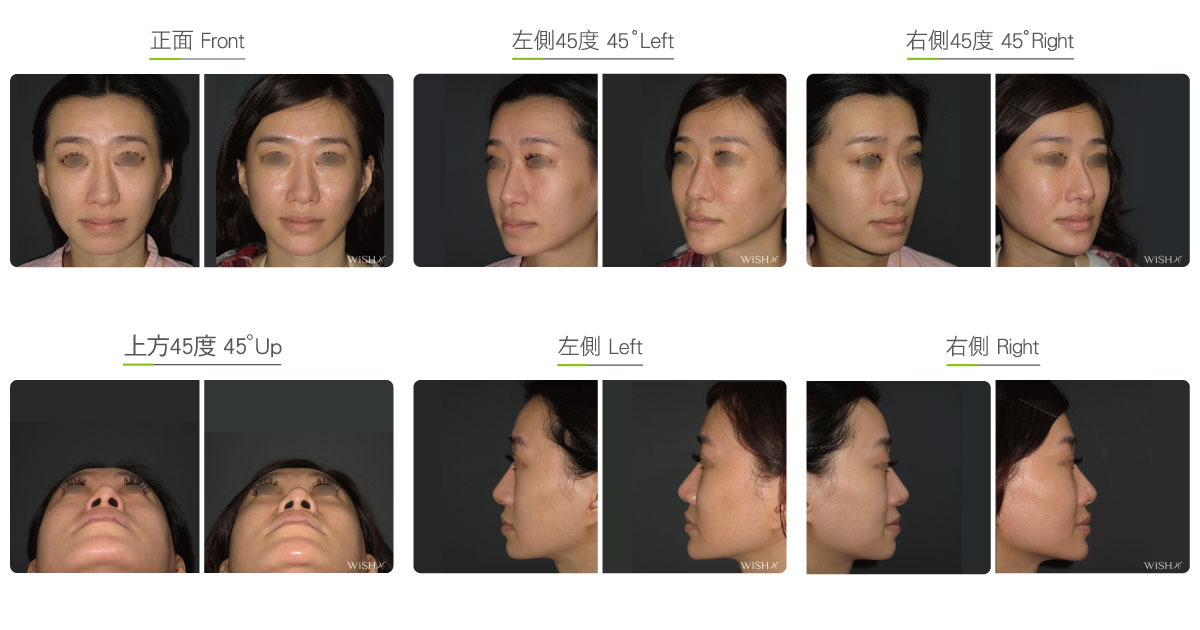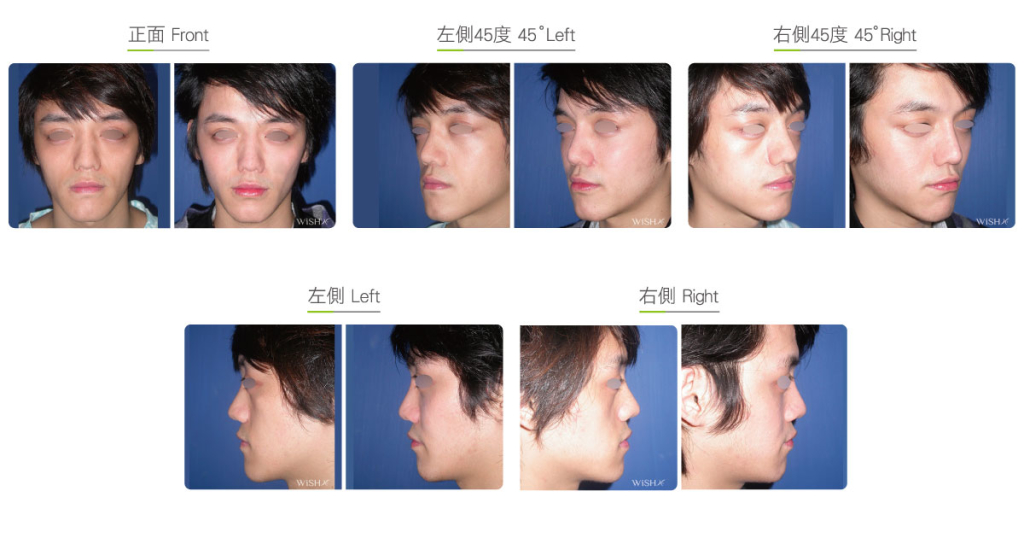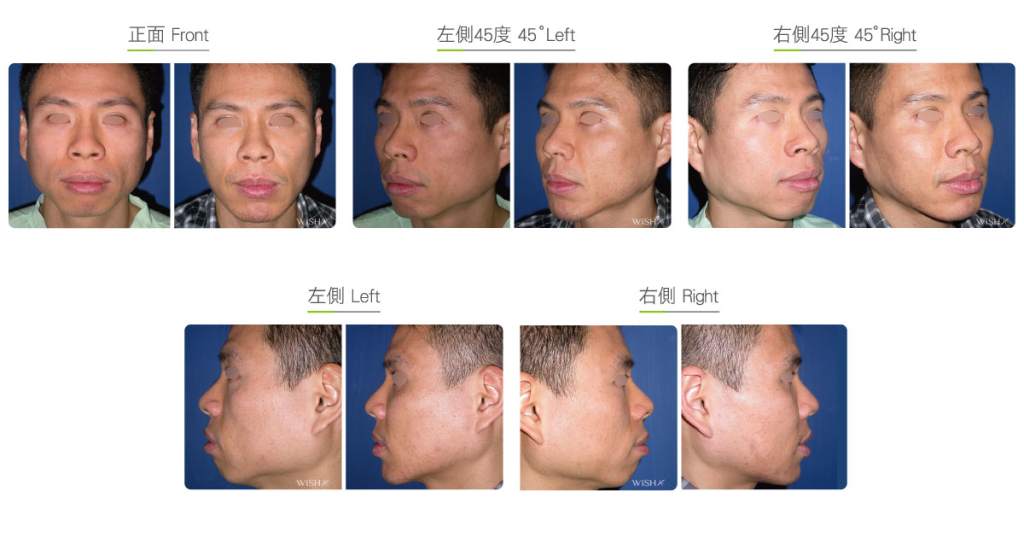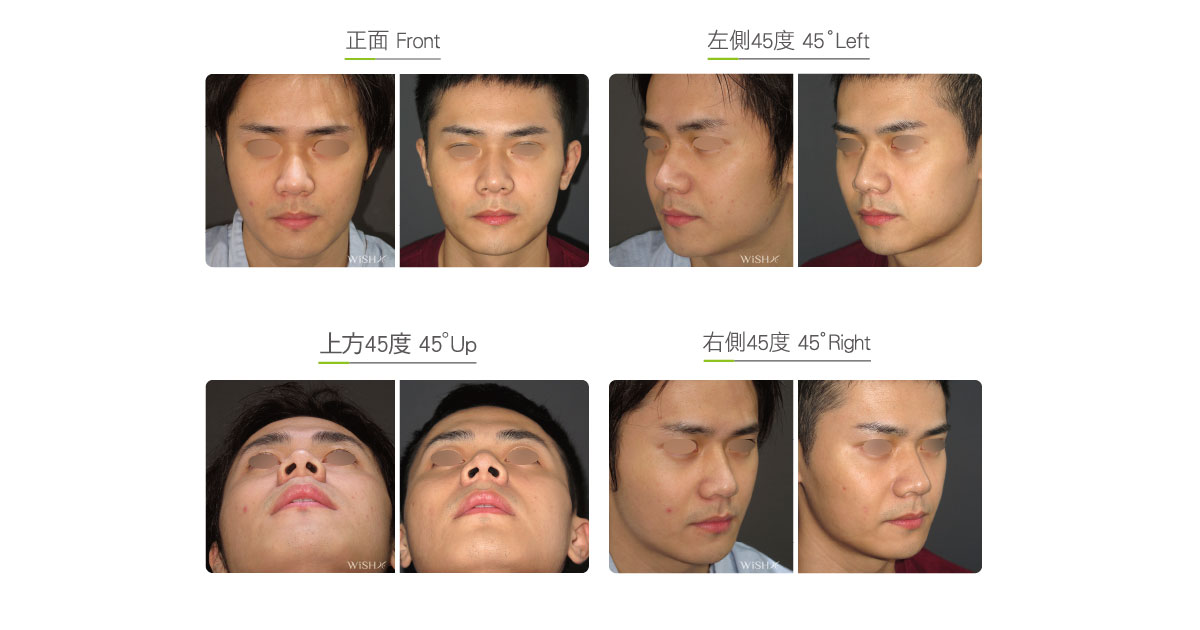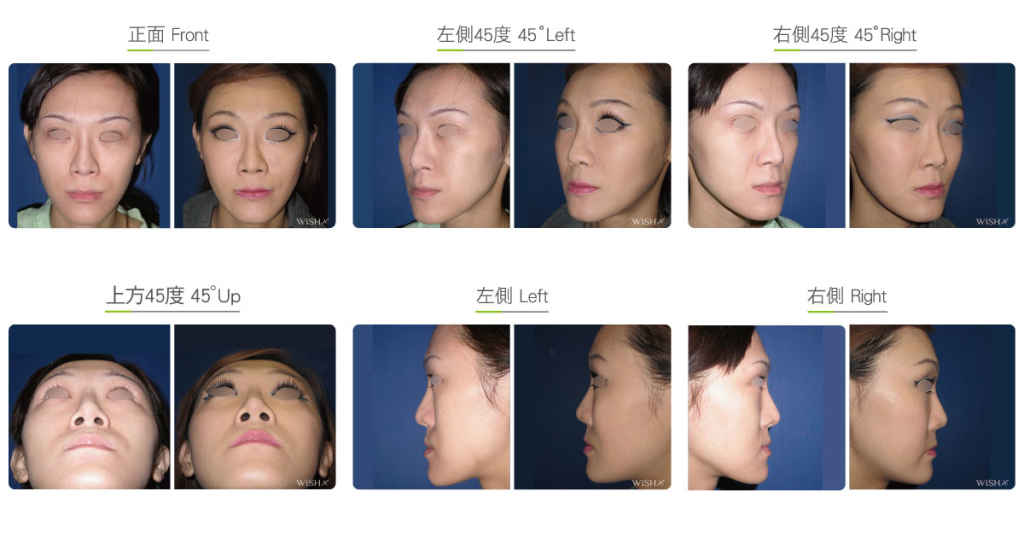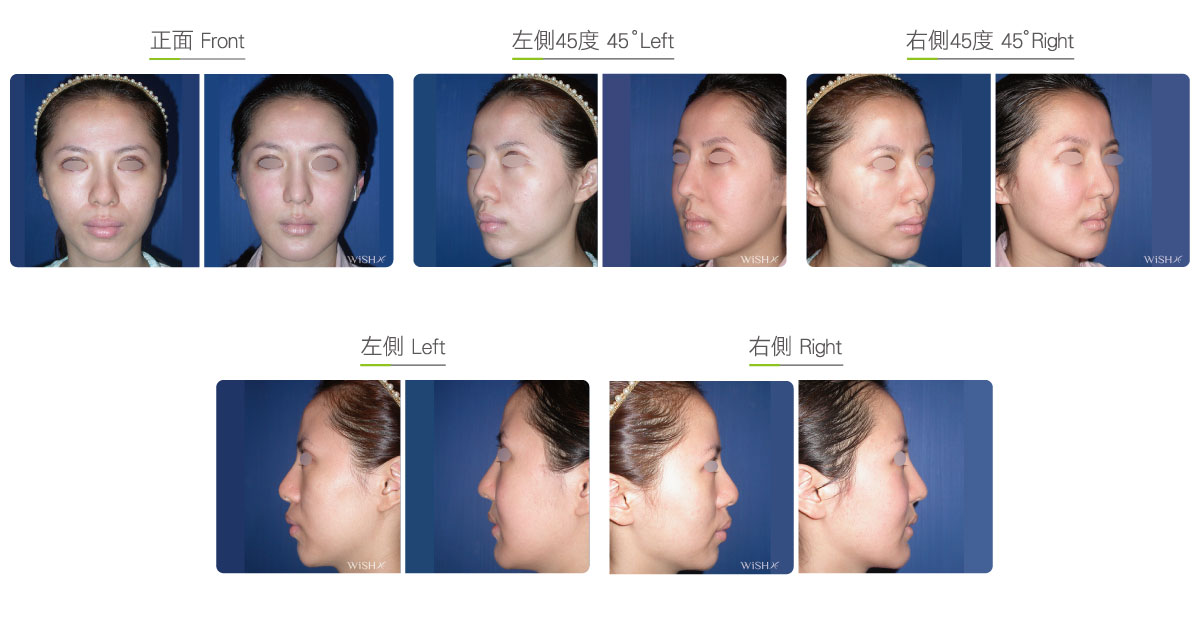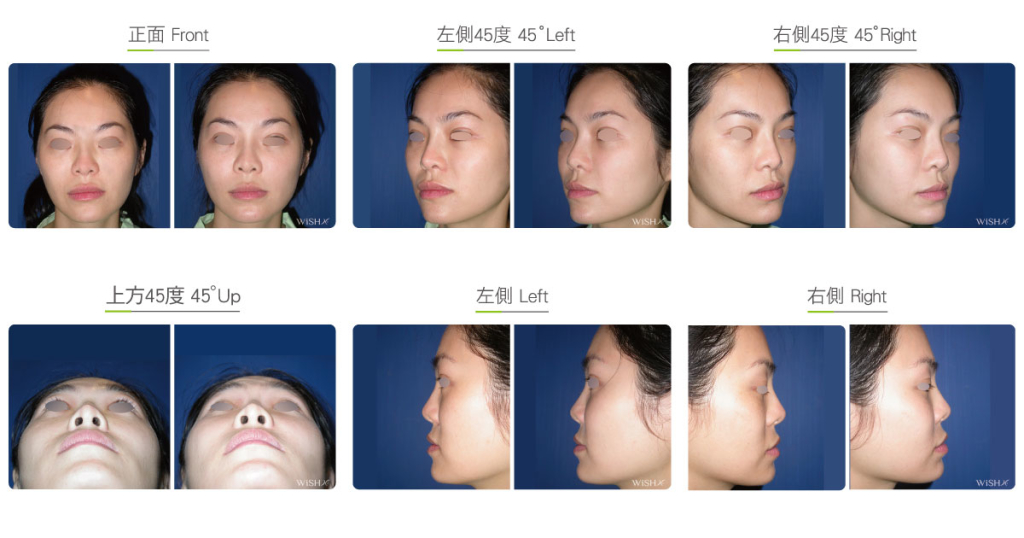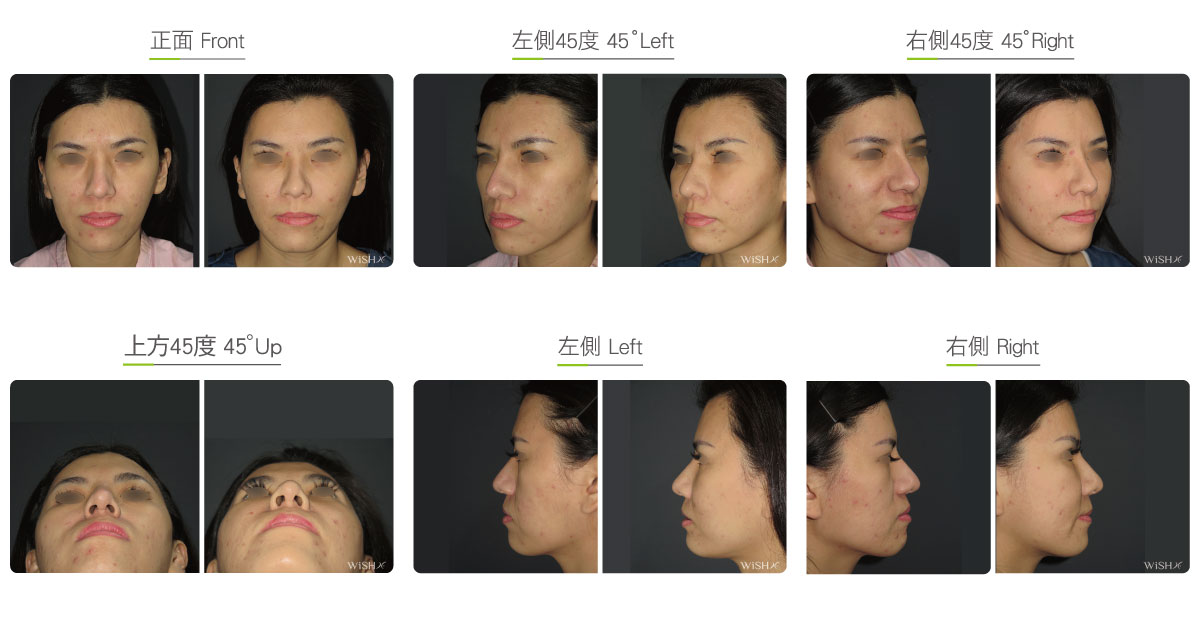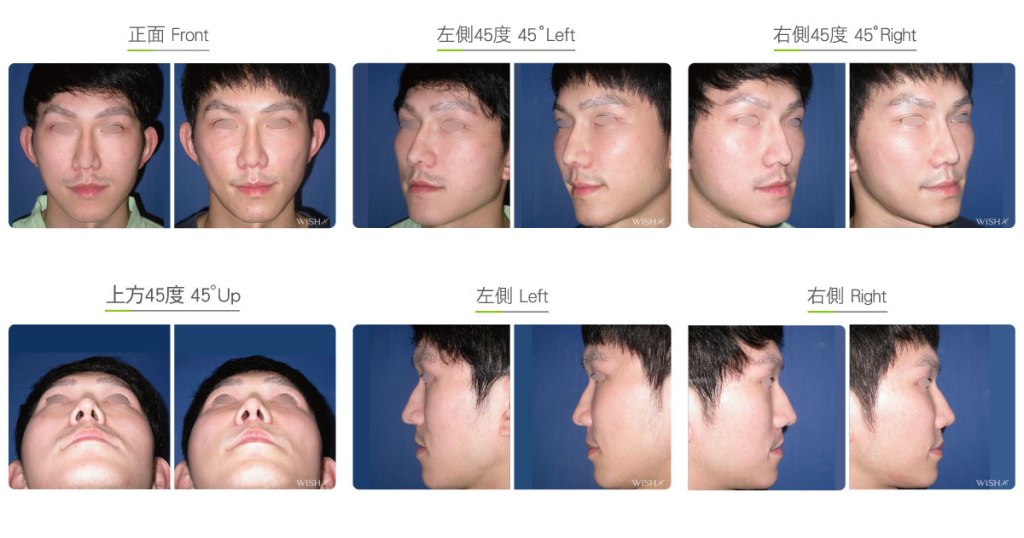Malar/Sub-malar Implant
This surgery utilizes different types and sizes of cheekbone implants to prop up the midface depression, and the materials of prostheses include silicone implant, Sili-Tex implant, and Medpor, which should be selected in light of the severity of individual depression and surgical requirements. Generally, for mild to moderate midface depression or for pure esthetic purposes, Dr. Chuang recommends the use of silicone or Sili-Tex implant because it is convenient for emplacement and easy to maintain and remove. There are various styles and sizes for physicians to select according to individual bone structures and subjective requirements. Because these prostheses can be easily emplaced without any screw fixation, the postoperative recovery is fast. However, if a congenital cheekbone variation or trauma causes large-area depression or incurs a bone deformity, structural repair materials such as Medpor should be employed for the reconstruction and correction of the midface defect to attain complete and radical improvement.
The surgical incision varies along with the type of implant. Concerning silicone malar/sub-malar implants or Sili-Tex cheekbone implants, the incision is made at the upper gingiva inside the mouth. Dr. Chuang first makes a 1.5–2cm incision at the upper gingiva on both sides, dissects the proper subperiosteal pocket, and emplaces the pruned silicone or Sili-Tex implants into the depressed cheekbone area to make the implants attach tightly to the bone, which would become fully stable and fixed after 1 month. Regarding Medpor, an additional incision needs to be made at the lower eyelid to perform larger-area subperiosteal detachment via the two incisions before the emplacement of Medpor. To secure the implant position, Medpor needs to be fixated with titanium screws to prevent future displacement. Regardless of the emplacement of either prosthesis, it is targeted to fill from the deepest layer of the structure, and the midface skin would also become tight or partially lifted, so it can offer regional improvement of the depression at the tear-trough groove or nasolabial folds and is less likely to incur facial muscle load or future droopiness, like that observed with the injection of hyaluronic acid or fats. Therefore, this surgery is also suitable for patients with submalar triangle droopiness due to facial skin looseness or collagen loss.
Surgical conditions
Duration
- Type of anesthesia: IV sedation + local anesthesia and regional nerve block or general anesthesia (Medpor emplacement)
- Type of incision: A 1.5–2cm incision at both sides of the gingiva inside the mouth or lower eyelid incision (Medpor emplacement)
- Recovery: 10–14 days
- Removal of stitches: No
General instructions
No food and water on the day of surgery
- Avoid smoking, alcohol, and irritating foods for 1 month postoperatively, and avoid strenuous or excessive activities.
- Avoid singing or laughing and other overt mouth opening for 2 months postoperatively.
- Avoid heavy massage to or squeezing of the face for 3 months postoperatively.
Ideal candidates
- Patients with distinct midface depression caused by bone deficiency
- Those with a sunken midface and combined obvious tear-trough groove or nasolabial fold depression
- Those with a sunken midface and combined skin looseness or droopiness
- Those with congenital or traumatic cheekbone depression or asymmetry
- Those who have undergone injection of hyaluronic acid or fat, the results of which are insignificant
- Those with a very flat midface angle or skin droopiness due to prior cheekbone reduction
- Those willing to redress midface structural depression (crescent-shaped face) due to a deep bite
Possible complications
- Poor wound healing
- Prosthesis displacement
- Foreign body reaction
- Infection
- Cheek numbness
- Foreign body sensation (temporary)
Surgical advantages
-
Surgical results are stable and long lasting.
-
The surgical wound is inside the mouth and scarless.
-
The surgery radically resolves the structural problems of midface bone deficiency.
-
It fills the submalar triangle from the deep plane, which lowers the risks of future skin load or droopiness.
-
It tightens or lifts the regional midface skin.
-
Different types and sizes of cheekbone implants are selected to fulfill the requirement of customization.
-
It is conducted along with nasolabial groove (Medpor paranasal implant) augmentation to deliver a complete midface reconstruction.
Surgical drawbacks
-
It can only fill the frontal cheekbone depression and is unable to improve the sunken cheek at both lateral sides.
-
It may have risks of tissue reaction, infection, or displacement of implants.
-
The period of recovery and swelling subsidence is relatively long.
-
The cheeks may present temporary numbness or foreign body irritation
-
Excess correction may result in the inward sinking of the eye bag
Possible procedure in conjunction
Comparison Of Cheekbone Implants
| Silicone | Gore-Tex | Medpor | |
|---|---|---|---|
| Ideal candidates | Midface depression or submalar triangle loss (plastic surgery for appearance) | Midface depression or submalar triangle loss (plastic surgery for appearance) | Severe midface depression or cheek bone defects (facial reconstruction) |
| Surgical incision | Upper gingiva | Upper gingiva | Upper gingiva and lower eyelid |
| Anesthesia method | IV sedation +
Regional block |
IV sedation +
Regional block |
General anesthesia |
| Appearance results | Soft | Soft | Masculine |
| Bone screw fixation | No | No | Yes |
| Face shape change | No | No | Probably wider |
| Cheek bone prominence | No | No | Yes |
| Restoration after removal | Simple | Simple | Relatively difficult |
| Infection risk | Relatively high | Low | Low |
| Displacement
probability |
Probable | Low | No |
| Surgical cost | Low | Moderate | High |

